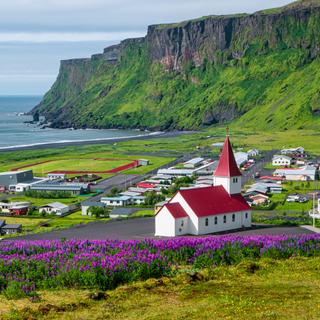
Egilsstadir weather and climate

Egilsstadir weather and climate
Day
14 °C
Night
9 °C
Sea
8 °C
Precipitation
44 mm
in month
Rainy days
8 days
in month
Daylight
20 hours
average
Sunshine
6 hours
average
Humidity
84 %
Weather charts for Egilsstadir

Find more destinations like this
Destinations with similar weather to Egilsstadir
Other destinations in Iceland
Weather overview for Egilsstadir
Weather overview
Egilsstadir, a tranquil town in Iceland, is characterized by its brisk and often chilly weather conditions. During the year, daytime temperatures can fluctuate considerably, ranging from a brisk 1 °C (34 °F) in the heart of February to a mild 14 °C (57 °F) come the peak of July. Evening temperatures dip correspondingly, from a frigid -4 °C (24 °F) in the dead of winter to a more temperate 9 °C (47 °F) during the height of summer nights. In terms of precipitation, June emerges as the driest month, averaging a mere 6 days of rainfall, while October stands out as the wettest with as many as 12 days of rainy days.
January weather
As December approaches, the descent of both day and night temperatures becomes prominent, with current readings at -4 °C (24 °F) and 1 °C (34 °F) respectively. The number of days with rainfall begins to dwindle, reaching a value of 10 days, while the monthly precipitation drops to 60 mm (2.36 in). The emergence of sunnier spells is heralded by an increase in sun hours to 1 hour.
February weather
Transitioning into January, Egilsstadir endures a persistent drop in nighttime temperatures, registering a chilly -4 °C (24 °F). Concurrently, the likelihood of precipitation begins to ascend, as evidenced by a monthly total of 89 mm (3.52 in). The winds reach their peak intensity, blowing at an average speed of 4.
March weather
With the arrival of February, Egilsstadir witnesses a modest uptick in daytime temperatures, now averaging 2 °C (35 °F), while nighttime temps also experience a gradual warm-up. The quantity of rainwater gathers momentum, shown by an uptick to 69 mm (2.72 in). The duration of sunshine experiences a significant boost, increasing to a more palpable 3 hours.
April weather
March brings a continued rise in temperatures, with daylight warmth touching a comfier 4 °C (39 °F), and nights gradually becoming less harsh as well. The high likelihood of precipitation begins to subside, now at 48 mm (1.88 in), and the decrement in rainy days becomes observable, now registering 8 days. The luxury of sunlit hours keeps growing, now at a delightfully increased 4 hours.
May weather
As spring solidifies its presence in April, there's a palpable warming trend, with daytime temperatures reaching an agreeable 8 °C (46 °F) and nights becoming noticeably milder at 3 °C (37 °F). Descending trends in the number of rainy days are clearly observed, down to 7 days, and the rainfall volume continues its retreat to 37 mm (1.44 in). The expansion in sunlit hours proceeds, marked by 6 hours of solar visibility.
June weather
With the onset of May, anticipations for the tourist season heighten as day temperatures climb to a welcoming 12 °C (54 °F). The frequency of rainy days attains its nadir, observed at a scant 6 days, while rainfall hits a seasonal low. Sunlight duration crests at its zenith, generously allotting up to 7 hours.
July weather
July arrives at its peak with the day temperatures hitting a yearly acme of 14 °C (57 °F) and nighttime temperatures offering a balmy 9 °C (47 °F). The approach of the tourist season's height is marked by an uptick in rainy days to 8 days, and the rise of rainfall totals is noted as 44 mm (1.74 in).
August weather
As summer wanes come August, the thermometers reflect a subtle downturn in day temperatures to a still-pleasant 13 °C (56 °F). Concurrently, the moisture quantity registers an increase to 51 mm (2.02 in), and the count of rain-drenched days continues on an upward path reaching 9 days. The duration of sunlight recedes slightly, now marking 5 hours. Winds gently calm to their lowest velocities.
September weather
September's telltale signs of seasonal shift are evident with day temperatures cooling to 10 °C (50 °F), whilst nights also trend cooler at 5 °C (42 °F). The upward march of rainy days is pronounced, and precipitation mirrors this with an increased measure of 81 mm (3.18 in). The diminishing light is quantified by a decrease in sunny hours to 3 hours.
October weather
October ushers in a marked chill with temperatures continuing their downward trajectory, now at 5 °C (41 °F) during the day and a creeping 1 °C (33 °F) at night. The pinnacle of rainy days is realized, with its climax at 12 days, and the highest rainfall volumes are consistently observed at 100 mm (3.92 in). The contraction of sunny periods becomes more evident, with visibility reduced to 2 hours.
November weather
November brings a continuous drop in temperature, with day averages hovering around 3 °C (37 °F) and nighttime averages descending to -2 °C (28 °F). The first signs of decreasing rainfall begin to surface, indicated by the volume 74 mm (2.90 in). The daylight hours begin to dwindle, with the quantity of sun hours mirroring this trend and dropping to 1 hour.
December weather
December rounds out the year with continuing declines in daytime warmth, now pegged at 2 °C (35 °F) while nights maintain the downward momentum at a wintry -3 °C (26 °F). The sun's stay is at its shortest for the year, clocking in at a sparse 3 hours of daylight. The lowest levels of humidity are encountered, resting at an arid 76 %.
FAQs
Is the day temperature in Egilsstadir reaching its yearly minimum in December?
Yes, in December Egilsstadir typically experiences some of its coldest days, with average daytime temperatures bottoming out at about 1 °C (34 °F).
Does the number of rainy days in Egilsstadir increase in January?
Indeed, January in Egilsstadir sees an upturn in rainy days, resulting in a higher accumulation of rainfall throughout the month.
What's the trend regarding the rainfall amount in Egilsstadir during February?
February depicts an uptrend in rainfall in Egilsstadir, with the month amassing approximately 69 mm (2.72 in).
What change occurs in the number of sun hours in Egilsstadir as March approaches?
Come March, the number of sun hours in Egilsstadir enjoys an ascent, brightening the days with around 4 hours of clear skies.
What is the trajectory of precipitation in Egilsstadir during April?
April in Egilsstadir is marked by a declining pattern in precipitation, both in terms of rainy days and total rainfall, settling at 7 days and 37 mm (1.44 in), respectively.
How does the climate in Egilsstadir evolve as May transpires?
May heralds more welcoming climatic conditions in Egilsstadir, with rising temperatures, decreasing rain days, and an abundance of sunshine.
During July, how do the rainfall patterns in Egilsstadir change?
In July, Egilsstadir begins to see an increment in its rainfall figures, ascending to around 8 days of rain and a collective 44 mm (1.74 in).
In August, what shift occurs in Egilsstadir in terms of daily sunshine hours?
The daily allowance of sunshine in Egilsstadir contracts marginally in August, with the average sun hours dipping to 5 hours.
What is the expectation for rainfall in September in Egilsstadir?
September is expected to bring more rainfall to Egilsstadir, with a noticeable elevation in both the number of rainy days and the volume of precipitation recorded.
As winter approaches, how does the typical weather in Egilsstadir adapt in October?
With winter’s approach, Egilsstadir braces for cooler days and increased precipitation, culminating in the peak number of rainy days and the largest amount of monthly rainfall.
During November, how does the day length change in Egilsstadir?
In November, the span of daylight lessens considerably in Egilsstadir, aligning with the shorter sun hours of 1 hour.
How does December weather in Egilsstadir typically compare to the rest of the year?
December in Egilsstadir is typified by its rather crisp air with some of the lowest temperatures seen annually, shortest day lengths, and minimal humidity levels.






